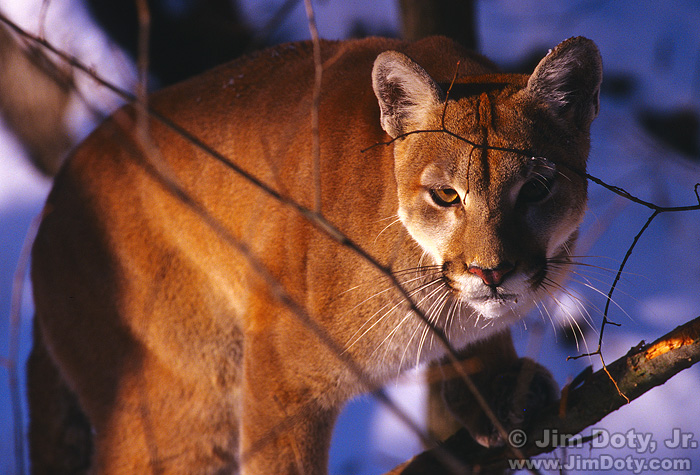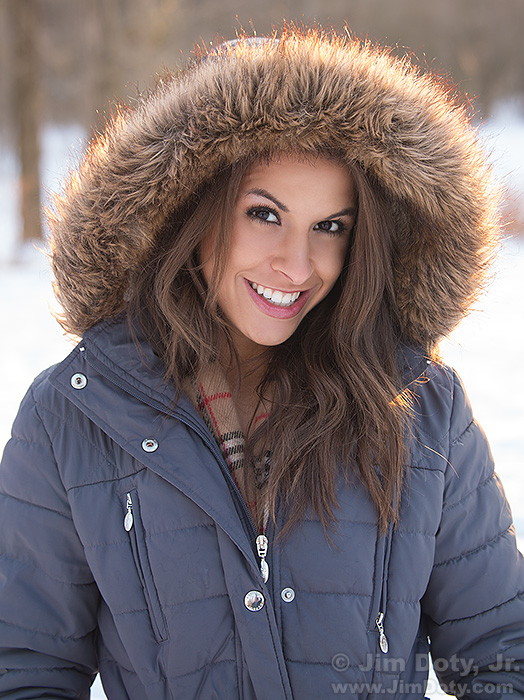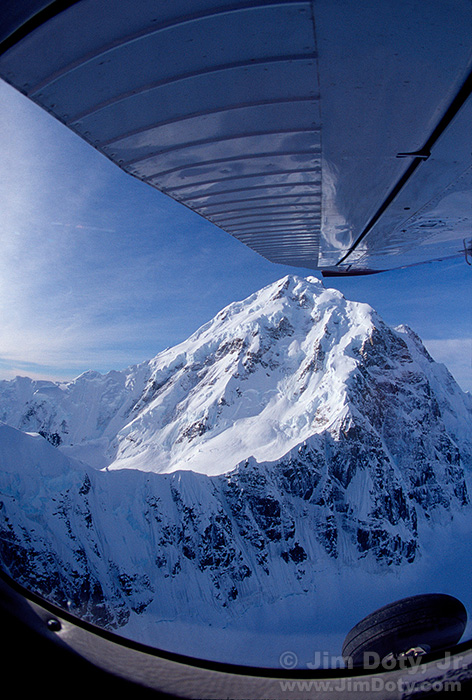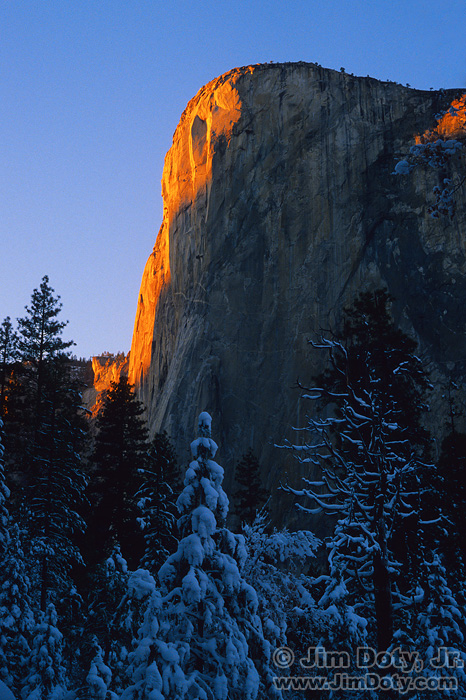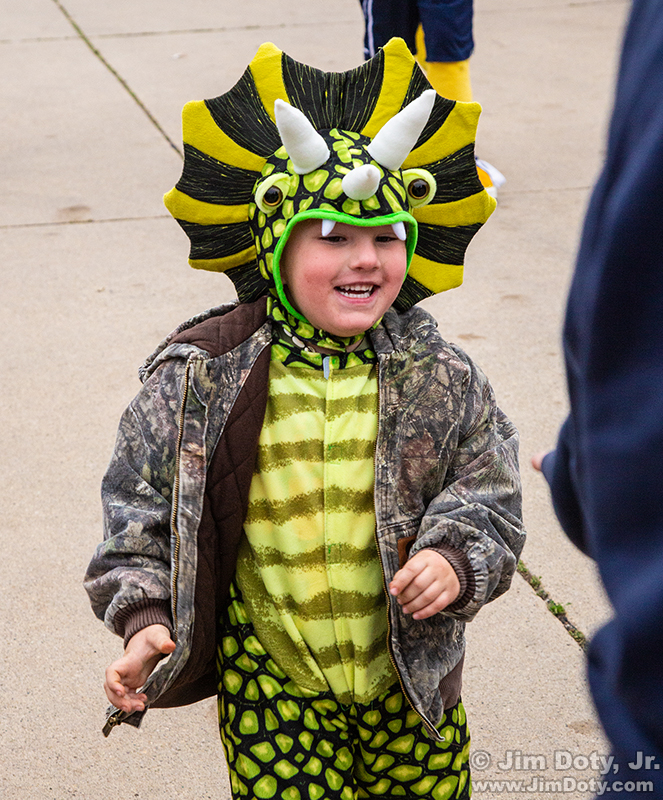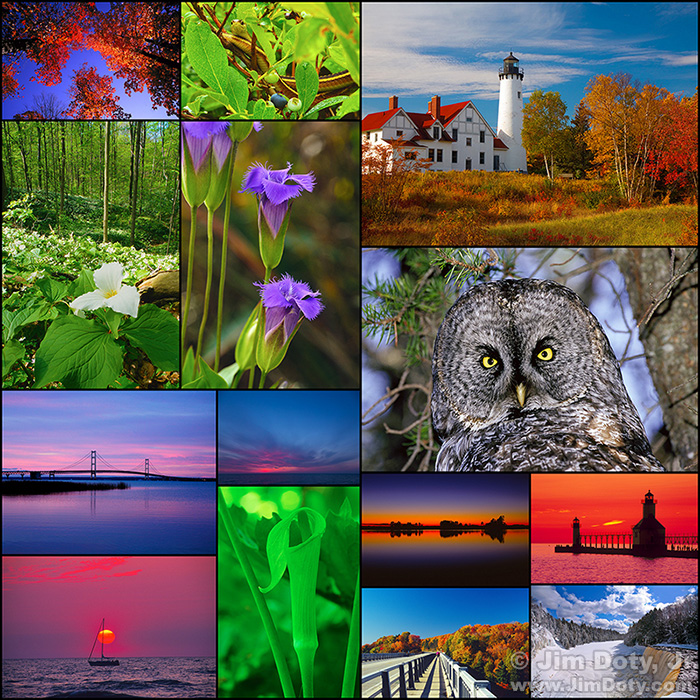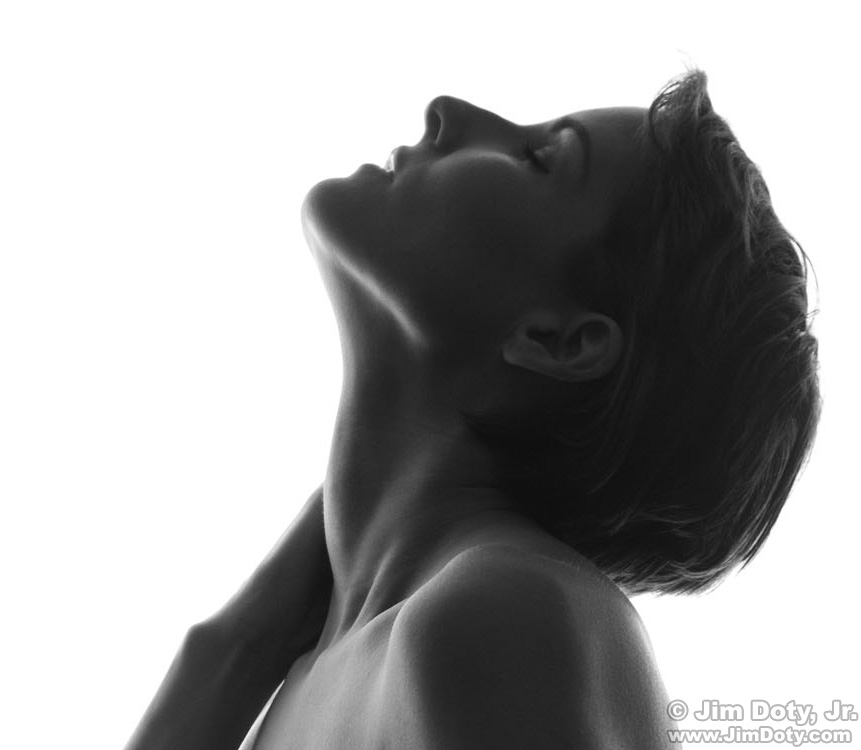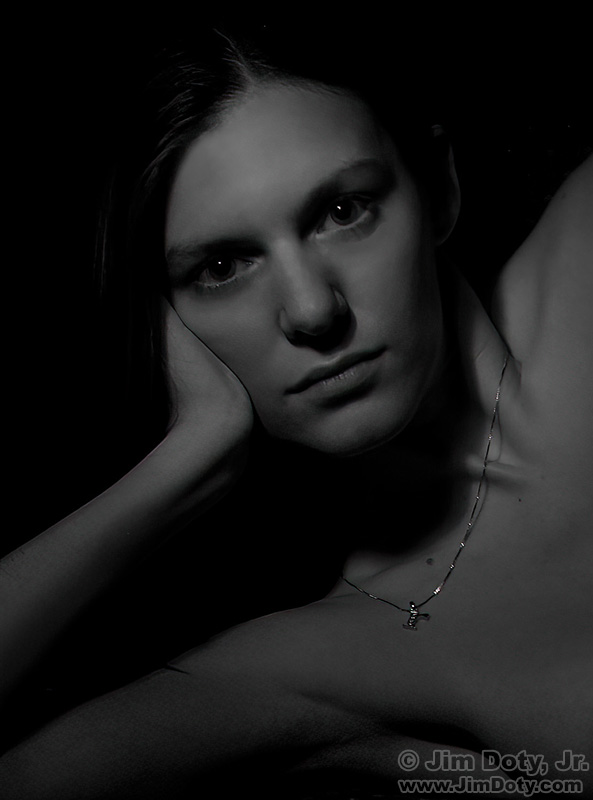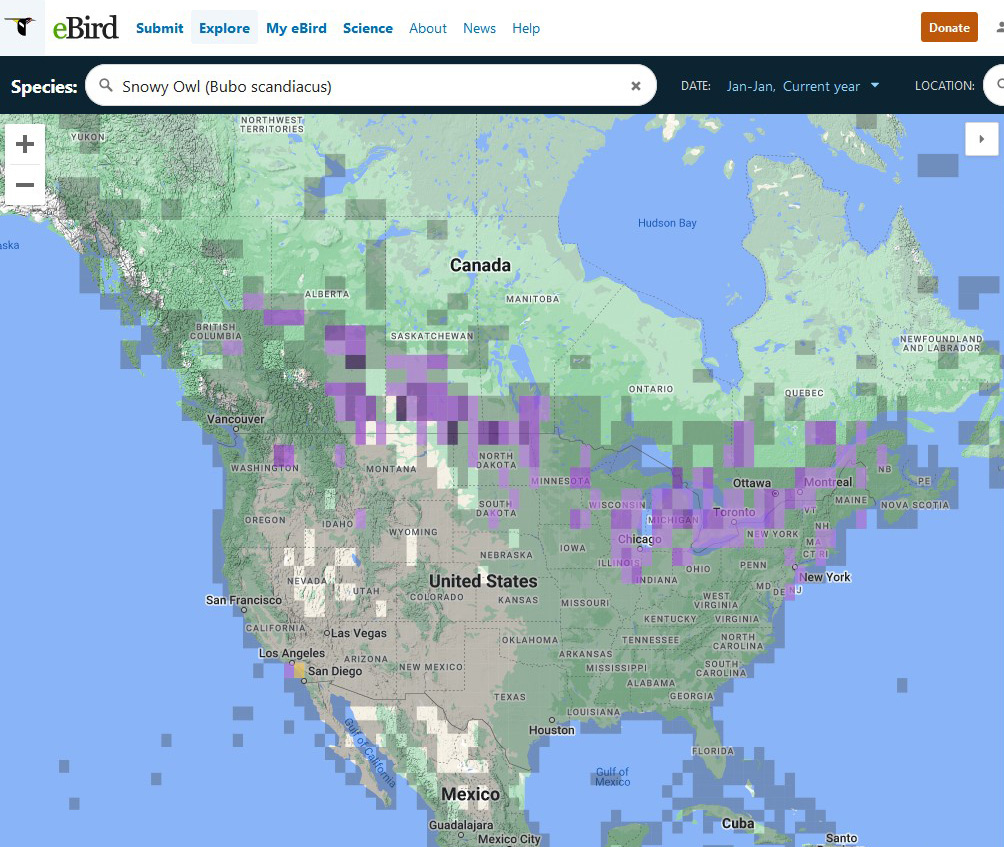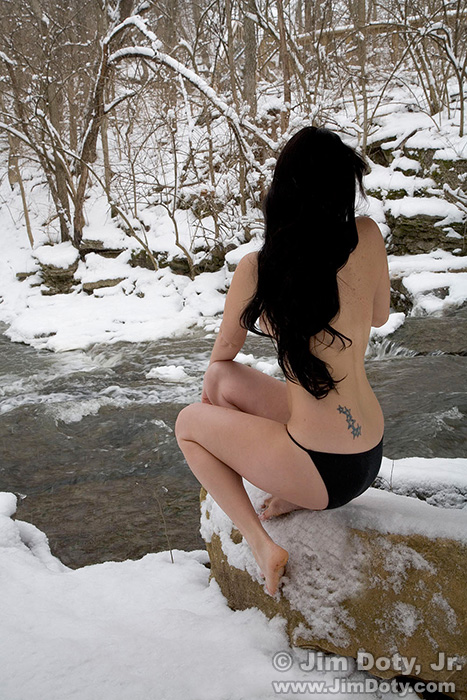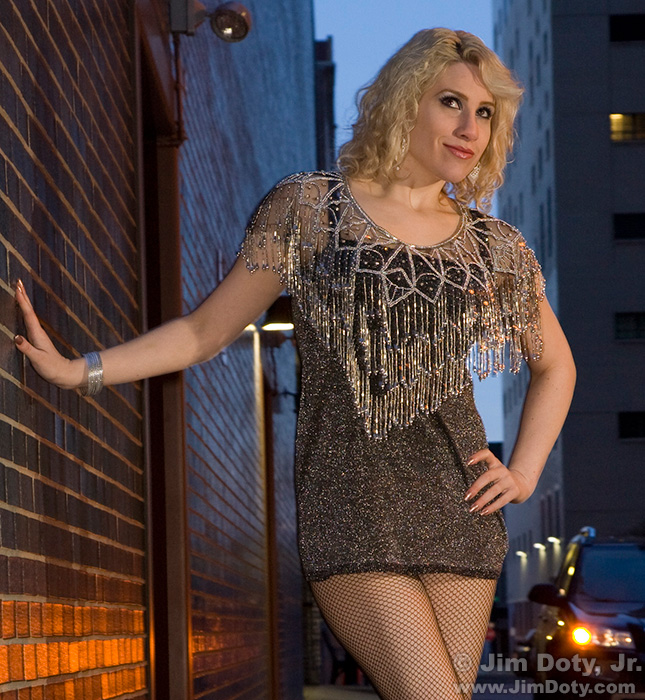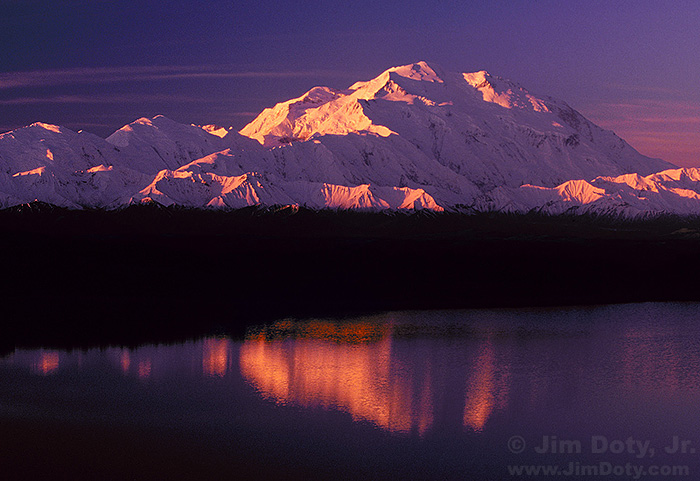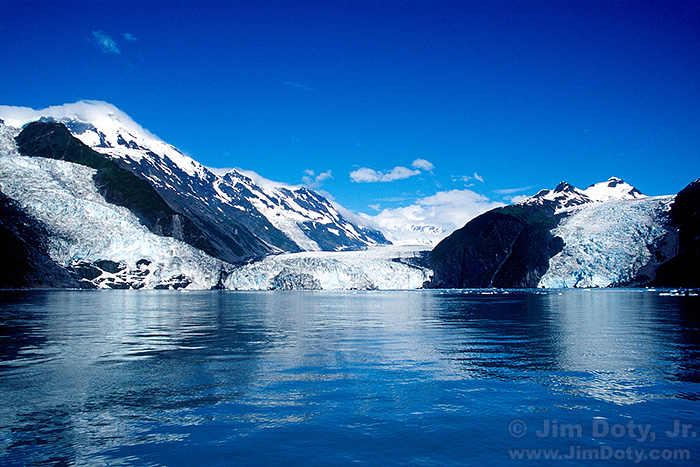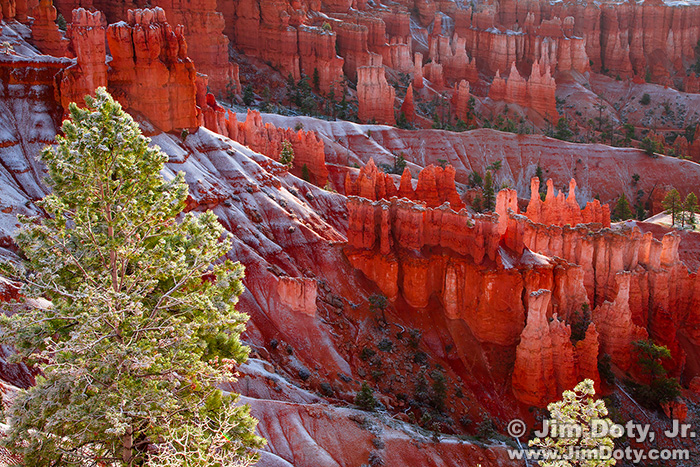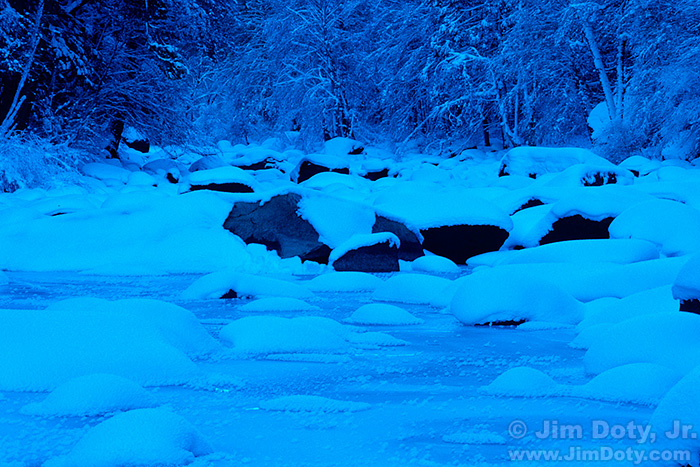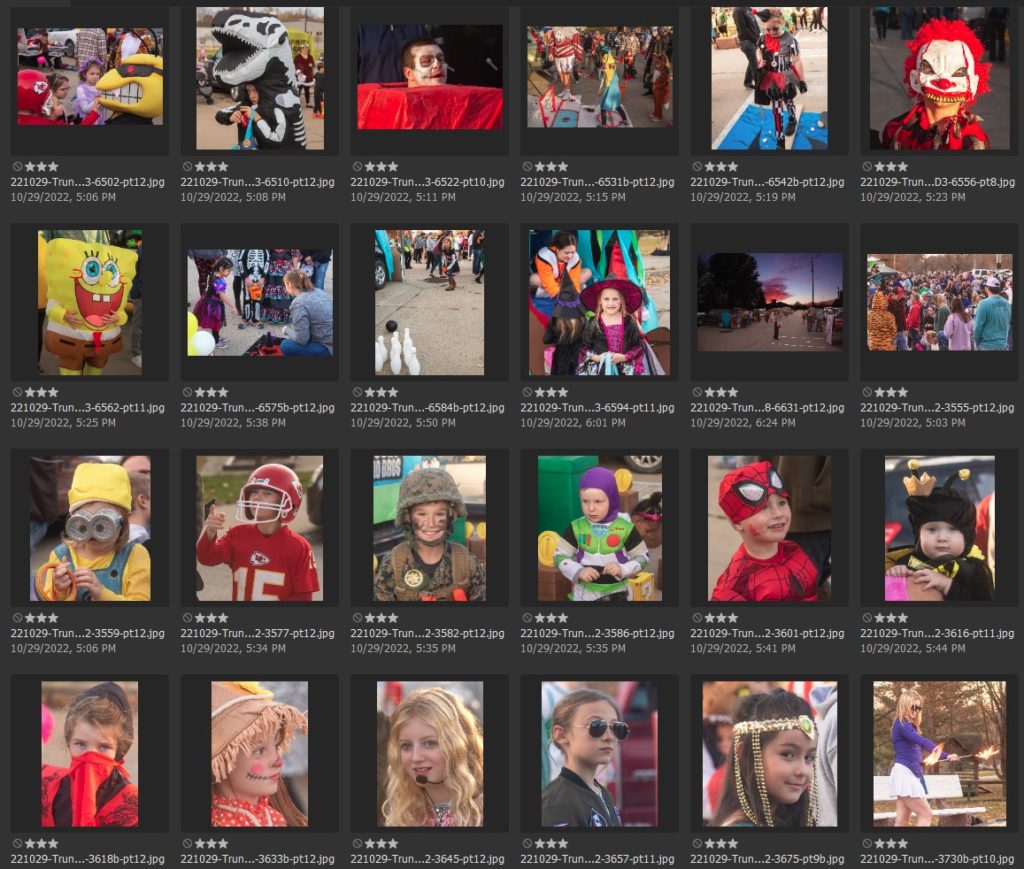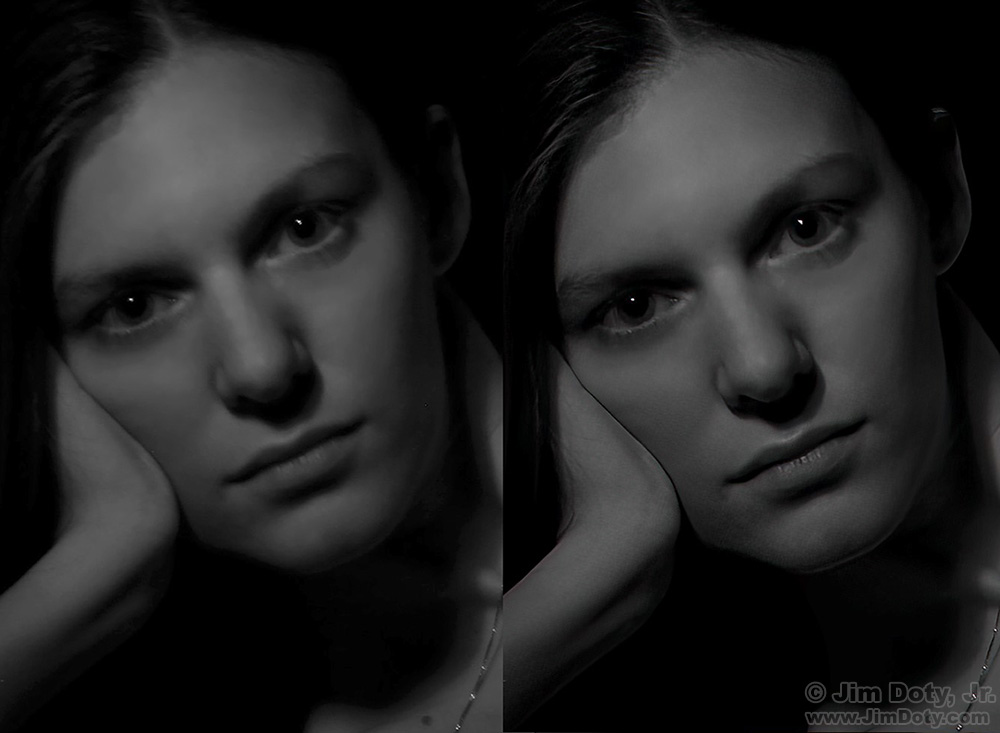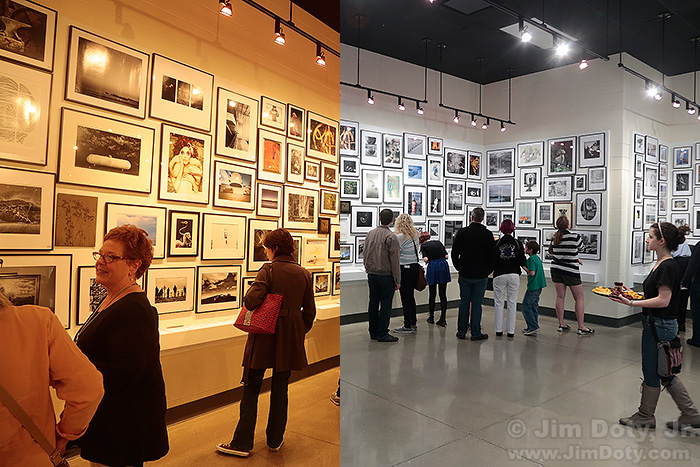Most wildlife are medium to dark in tone, making them a challenge to meter properly in the bright, white tones of winter. If you trust one of your camera’s automatic exposure modes, the odds are good you won’t get the best exposure. If you switch over to manual exposure and make the right decisions, you can get great exposures and better quality photos (more about that later).
Category Archives: Using Equipment
Metering Wildlife in the Snow, Part One
Metering dark toned wildlife in the snow is a major exposure challenge. It is usually best to avoid large “burned out” areas (washed out, featureless white) in a nature or landscape photograph, but with properly exposed snow, the wildlife can be so dark as to lose all texture. On other hand, metering for the wildlife can burn out the snow. So what do you do? And what about the complications of metering white animals?
Metering People in the Snow
The white snow in a winter scene can and often does fool a camera meter into underexposing a portrait, so here are the steps to take to get the right exposure. I throw in a few portrait suggestions too.
Metering Daytime Winter Scenes
Metering for scenes with a lot of snow can be tricky since the bright snow fools the camera meter. I see a lot of winter photos with gray snow, which means the camera meter did exactly what it was designed to do. The solution is quite simple provided you know what to do.
“How To” Series: Winter Photography
In addition to all of the usual photographic challenges, winter provides some extra complications, especially in terms of metering. So I began this series of articles on winter photography. Check out the links below. The articles will help you meet the unique challenges of winter photography. So get out there, have fun, and create some great winter images!
Camera Settings for Trunk or Treat
If I am photographing an event and the light is constant, I shoot in manual mode for the most accurate exposure and the best color. But if the light is variable, there isn’t time during an active event to be constantly changing the exposure because you will miss too many photo ops. That means shooting in an automatic mode.
Total Immersion Nature Photography Weekend in Beautiful Northern Michigan
Are you ready to take your nature and wildlife photography to the next level? Are you ready to learn the professional secrets that make the difference between good images and great images? Are you ready for a high intensity, action packed, total immersion photography weekend? Come to Park of the Pines on beautiful Lake Charlevoix October 13-15, 2023.
Portraits: Wrap Around Backlight
Painting People with Light
Painting with light is an interesting technique that gives you a different kind of look from using a flash unit or ambient light. As with other kinds of light you can make your subject as light or dark as you want. For these images I went with a darker, low key look. Inanimate objects are the usual subjects for painting with light because they do not move during the long exposures, but I wanted to try it with a live human being so I asked a friend to be my subject.
How to Photograph Jupiter, Saturn, and Their Moons
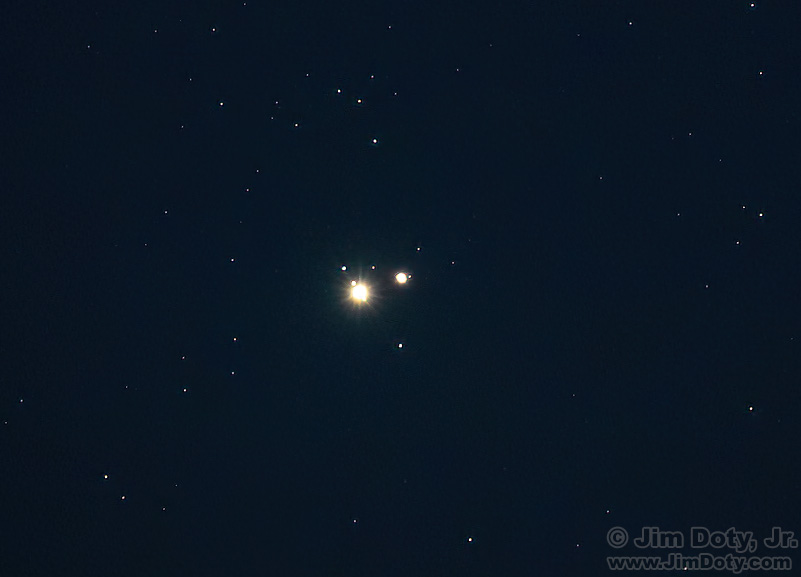
With a tripod mounted camera and a 300-400mm telephoto lens, it is possible to photograph Jupiter and its four Galilean moons (they are named for Galileo), and Saturn and its biggest moon, Titan. I captured them during their Great Conjunction a little over two years ago. Jupiter is on the left with three of its Galilean moons. Saturn is on the right and Titan is just to the right of Saturn.
The Super Conjunction of Jupiter and Venus

The super conjunction of Jupiter and Venus, March 1, 2023 at 7:24 pm. Venus and Jupiter pass each other on a regular basis so conjunctions aren’t rare. But this time they passed unusually close to each other, making it a Super Conjunction. They were 1/2 degree apart. They won’t be this close to each other again until February 2032. I had a telescope set up for my grandsons and they were thrilled to see three of Jupiter’s four “Galilean Moons” (named for Galileo who spotted them through his telescope). The Galilean Moons from top to bottom in this photo are Callisto, Ganymede, and Io. (Europa was not visible.)
How to Photograph a Musician in the Cold and Snow
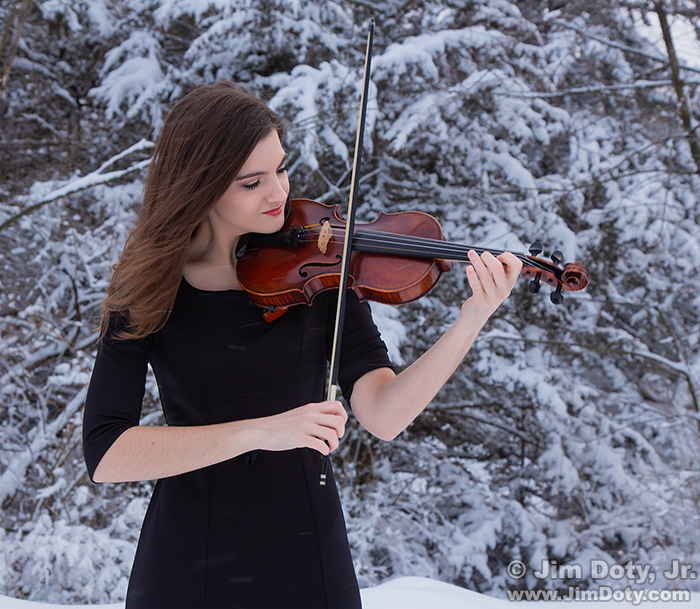
It was my happy privilege to do winter portraits of Beth Presler who is a superb violinist. This article has suggestions for photographing any musician on a cold, snowy winter day.
More Help Finding and Photographing Comet ZTF (C/2022 E3)
I have had such good lunch photographing prior comets I was eagerly looking forward to seeing and photographing Comet ZTF (C/2022 E3). This comet is such a big draw because it has not passed earth in 50,000 years and will not likely return again. When I finally had a relatively clear night February 1, I was outside and ready to go. I had a much harder time than I expected. I glassed the right area of the sky with binoculars and I could not find anything that looked like a comet. So I took pictures of the northern sky which you can see above. On the back of my camera I could not the comet. So I downloaded the memory can looked on my computer monitor.
How to Find and Photograph Snowy Owls
Winter is your opportunity to photograph Snowy Owls. When it is cold enough and there is enough snow cover, snowy owls move down into the northern U.S. The colder it is the farther south they move. If conditions are right, don’t delay. If the winter turns warmer the snowy owls will head back north.
How to Photograph a Nude Model in the Cold and Snow
It is difficult enough to create a beautiful nude image under normal circumstances, much less in the cold and snow. You need to bring some significant skills and experience to the task. So does your model.
How To Work With A Model (or Anybody Else) When The Windchill is 4°
You would think a windchill of 4° Fahrenheit (-16°C) would be too cold for a photo shoot, but not with some models. We booked this January shoot weeks in advance so we knew it would be cold, but we had no idea how cold until the day arrived. Here’s the story behind this image and how to work with a model (or anybody else) when it is so cold.
The Sunny f16 Rule Isn’t Reliable in Winter
The Sunny f16 rule is really useful on bright sunny days in the spring, summer, and fall, but you can’t rely on it for accurate exposures on bright, snowy winter days. It will often lead you astray and you will have seriously blown out highlights. There are much more accurate ways to meter in the winter.
Testing Your Camera’s Snow Exposure Latitude
The “snow exposure latitude” for every camera is different. You won’t find it in your camera’s manual but it is easy to determine with a do-it-yourself test. Why does it matter? If you don’t know the snow exposure latitude for your camera and how to apply it to your images, the color and quality of your winter photos will suffer.
How to Protect Your Camera Gear in the Cold and Snow
Cold and snow can cause a lot of damage to your camera gear. Something as simple as shooting outside and taking your camera inside your house or car can cause hidden damage that won’t show up until days or weeks later. The simple steps in this article could save you hundreds of dollars in repair bills.
Metering Nighttime Winter Scenes
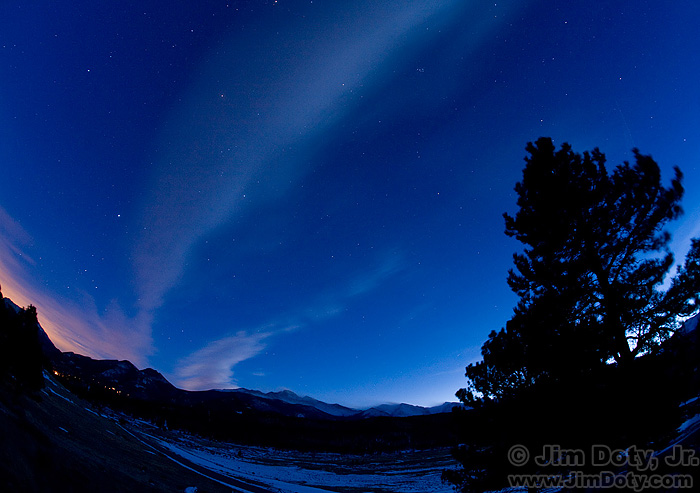
Twilight, Rocky Mountain National Park. Sirius, Canis Major, Orion, Taurus, the Hyades star cluster, and the Pleiades star cluster are all visible in the fading light. Click for a larger version.
You can photograph the night sky year around, but winter brings an added bonus: SNOW! When you don’t have the benefit of moonlight, most of the year land forms a dark to black silhouetted skyline against the night sky. In winter you have the possibility of including the highly reflective snow. You can see both in this photo. Any place not covered with snow is very dark to black. Having reflective snow is why winter is the favorite time of year for a lot of photographers to go out and photograph the night sky.
Metering Evening Winter Scenes
Just like metering daytime winter scenes, the key to metering evening winter scenes is knowing what to meter and deciding how much exposure compensation to use.
Metering Wildlife in the Snow, Part Two
Most wildlife are medium to dark in tone, making them a challenge to meter properly in the bright, white tones of winter. If you trust one of your camera’s automatic exposure modes, the odds are good you won’t get the best exposure. If you switch over to manual exposure and make the right decisions, you can get great exposures and better quality photos (more about that later).
Metering Wildlife in the Snow, Part One
Metering dark toned wildlife in the snow is a major exposure challenge. It is usually best to avoid large “burned out” areas (washed out, featureless white) in a nature or landscape photograph, but with properly exposed snow, the wildlife can be so dark as to lose all texture. On other hand, metering for the wildlife can burn out the snow. So what do you do? And what about the complications of metering white animals?
Metering Daytime Winter Scenes
Metering for scenes with a lot of snow can be tricky since the bright snow fools the camera meter. I see a lot of winter photos with gray snow, which means the camera meter did exactly what it was designed to do. The solution is quite simple provided you know what to do.
How To Series: Winter Photography
In addition to all of the usual photographic challenges, winter provides some extra complications, especially in terms of metering. So I began this series of articles on winter photography. Check out the links below. The articles will help you meet the unique challenges of winter photography. So get out there, have fun, and create some great winter images!
Trunk or Treat: Choosing the Best Event Photos
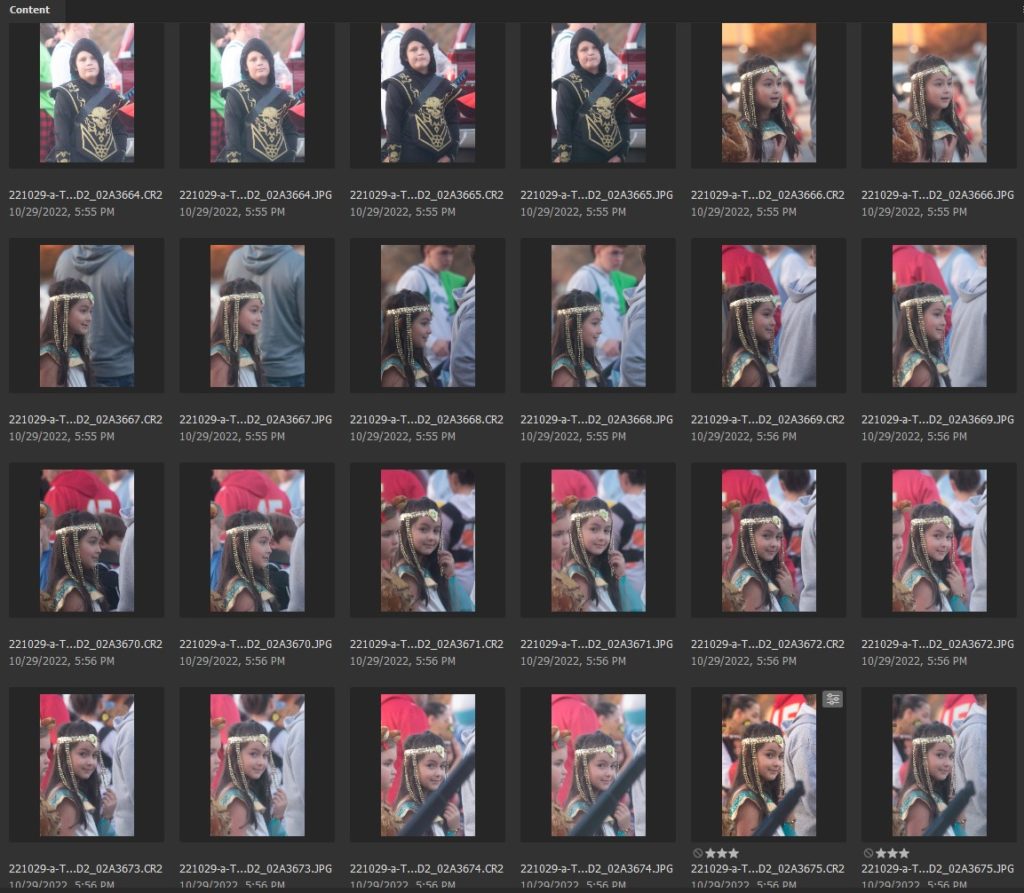
At my first newspaper gig in Oklahoma (back in the 1980s), I learned to take a lot of photos at busy events. Photographing active children is a game of percentages. You might take a half dozen or more images of one trick-or-treater to get the shot you want, or maybe none of the images “work” and the moment is gone. So you take a lot of pictures.
Camera Equipment and Settings for Event Photography
Last Saturday I photographed a Trunk or Treat event for the local newspaper. I took 361 photos with two DSLRs, plus 5 more with my iPhone. On my first cut I picked 63 images. After the last cut I was down to 24 images which I optimized and sent to the paper. In this article I shared the equipment and camera settings that I used.
Topaz Sharpen AI
The more I work with Topaz Sharpen AI, the more impressed I become. Topaz uses artificial intelligence to sharpen images that are not quite sharp.
The 30 Second Secret to Great Colors
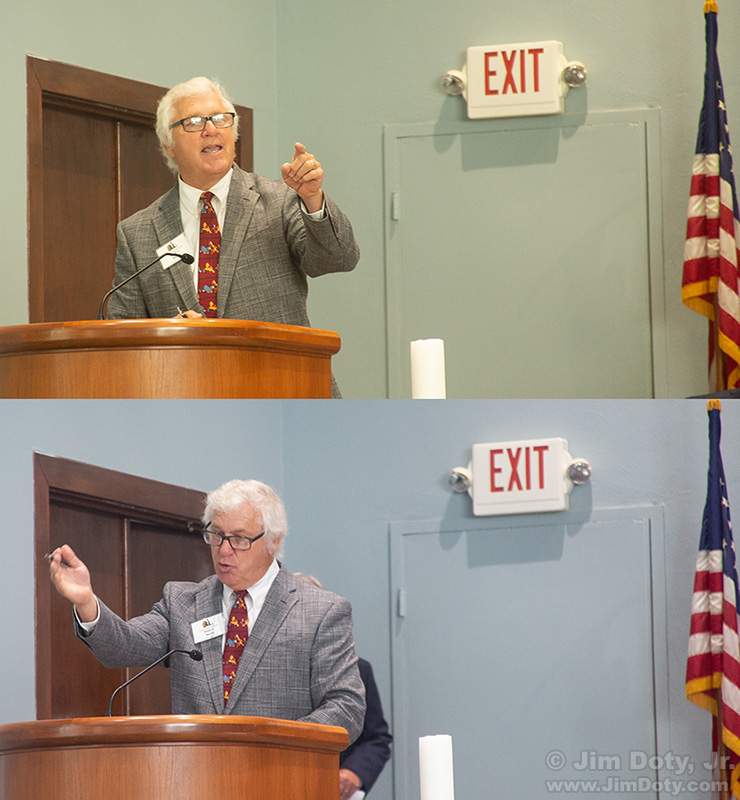
30 seconds of your time can make the difference between disappointing colors and great colors. That is the difference between these two photos. The top image is skewed toward yellow and green tones. It is most obvious in the white part of the EXIT sign, the white stripes of the U.S. flag and the white candle next to the speaker’s podium. The speaker has yellow-ish skin and and the blue walls are greenish in the top photo. In the bottom image all of that has been fixed. The flag looks much better, the candle is pure white, and the blue walls are actually blue. Most important, the skin tones (my primary goal) are so much better. The yellow skin is gone.

